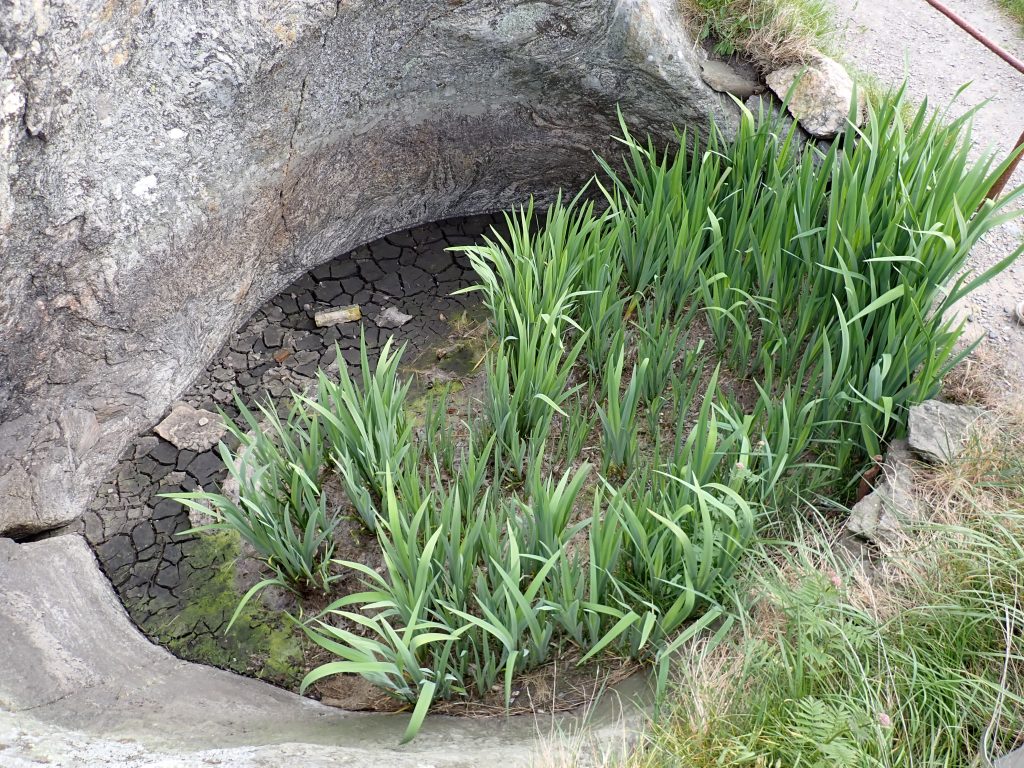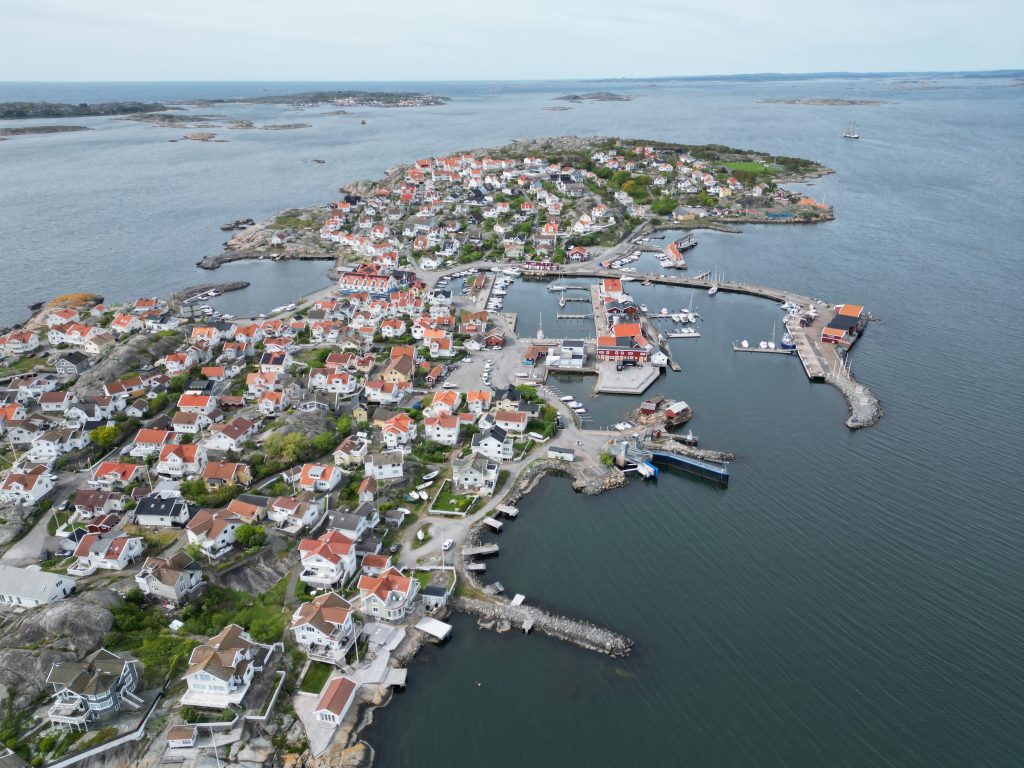While we waited for the overnight northerly blow to go through, we went for a walk around Marstrand. It is a beautiful island and the walk took us around much of the shore. We went past the old bath house and then on towards the north of the island. From quite woody green areas, the landscape quickly becomes quite barren and rocky, but still maintaining a stark beauty.

From there we headed back round the southern side of the island (a bit more sheltered in the strong northerlies) past the naked ladies swimming area and then past a couple of giant’s cauldrons. These are also known as giant’s kettles, moulin potholes, or sometimes glacial potholes. They were formed about 13,000 years ago and caused by rocks being trapped under the ice sheet and rotating round, effectively drilling into the rock.

Around midday we left Marstrand. The wind had eased slightly and a passage south was now a much more appealing prospect. We hoisted the main straight away, but kept motorsailing through the Albrektsunds kanal. The canal was originally built to replace the Halsens canal. With the land rising, this silted up and became too narrow and shallow, so in 1842-44 they dug the Albrektsunds kanal at a cost of 27,000 riksdaler (the currency of the time – it was replaced by the kroner in 1873). The engineer – Nils Ericson – was also responsible for the reconstruction of the Trollhätte Canal which was completed in 1844. The canal was further improved in 1858-60 and then took its current form with a further tranche of work in 1905-6. The main purpose was to provide a protected route for merchants through to Marstand, itself a well-fortified place. It is a beautiful route south – quite narrow in places but with a minimum depth of around 3.6m and a lovely view of Marstrand behind.
From the canal we sailed south a further 7 or 8 miles to Källö Knippla. This is, as with most islands around this area, an old fishing harbour but it remains a busy island with over 300 residents and many well-preserved archipelago houses. Its origins lie in the herring season of the late 18th century and over this period there three herring salting plants, one at Källöskär, one in Linneviken and one at Laberget. When this season peaked in 1809 the population was around 80 people, but this gradually diminished as the herring dissipated and times proved more difficult. In more modern times the island has prospered again and the number of residents has grown. In peak season the population grows significantly further!

